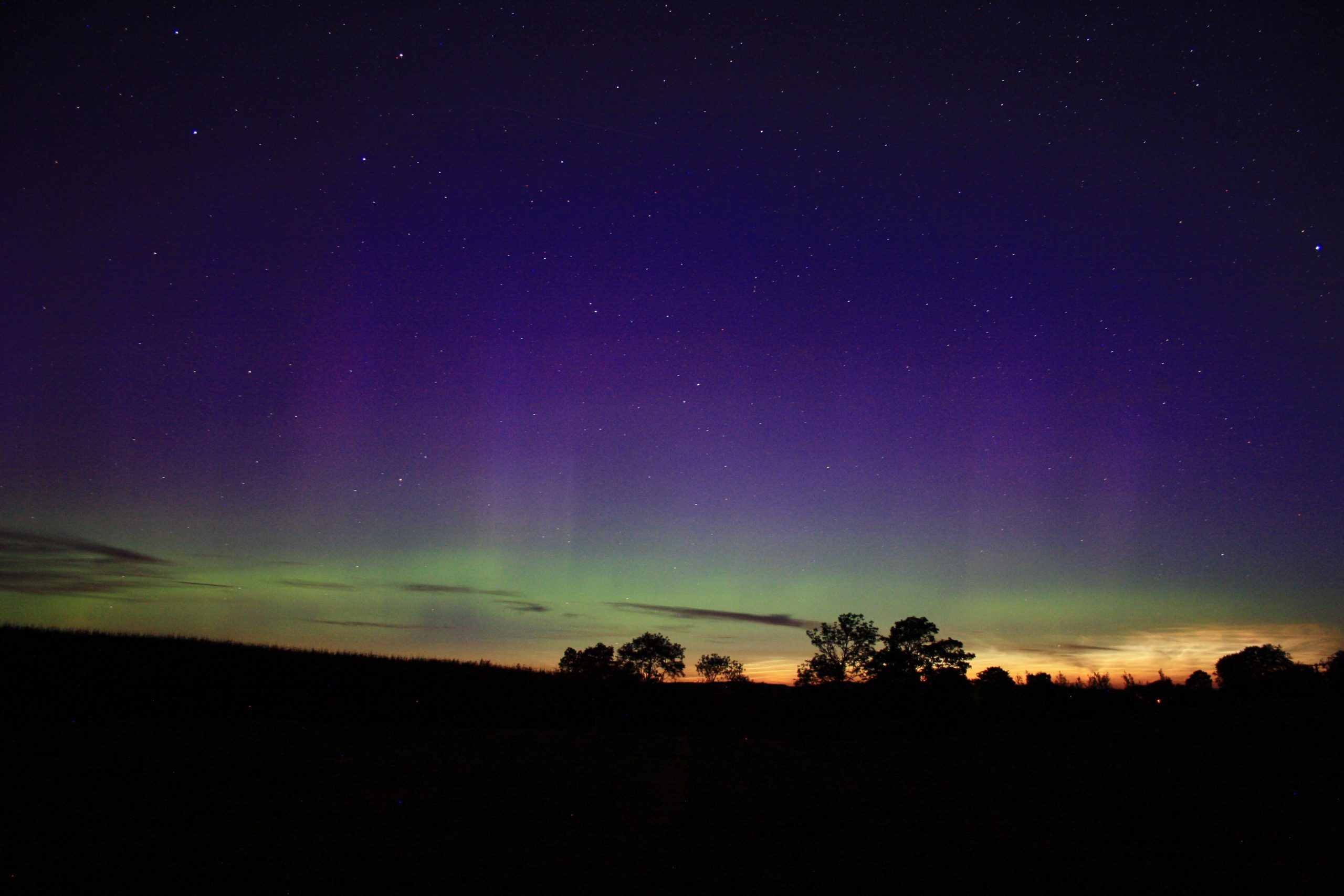Joint meeting of the Radio Astronomy Section and Aurora & Noctilucent Cloud Section, 2022 March 4
2022 June 6
This joint meeting was held over Zoom on Friday, 2022 Mar 4. Commencing at 7.30 p.m., it featured presentations by Dr David Hooper (National Centre for Atmospheric Science) and Sandra Brantingham (Director, Aurora & Noctilucent Cloud Section).
Dr Hooper’s talk was entitled ‘Ice crystals at the edge of space: the related phenomena of noctilucent clouds (NLCs) and polar mesosphere summer echoes (PMSEs)’. In this presentation, he looked at two seasonal phenomena of the high atmosphere that rely on the formation of ice crystals. The air within the mesopause region, which lies between altitudes of 80 and 90km, is very thin (the density is of the order of one-hundred-thousandth that at sea level) and very dry (water vapour concentrations are below 10 parts per million by volume). Nevertheless, at upper-middle and high latitudes, it becomes exceptionally cold during the midsummer months. This is a result of air rising and expanding over the polar region. Ice crystals can form if the temperature drops below approximately –125°C.

If the ice crystals grow sufficiently large (i.e., to a few tens of nanometres), they can be seen from the ground in the form of noctilucent clouds (NLCs). These occur at altitudes of approximately 82km, which is 70km higher than almost all other clouds seen at middle and high latitudes. Since the NLCs are insubstantial, they only become visible during twilight hours, i.e., when the Sun is between approximately 6 and 16° below the horizon. The conditions required for NLC formation occur on an almost daily basis between late May and early August at high latitudes. Although they occur less frequently over the latitude band covering the British Isles, NLCs can be seen from up to almost 1,000km away (albeit at low elevation angles).
The presence of ice crystals also affects the electron density within the mesopause region. The atmosphere between altitudes of 60 and 90km becomes weakly ionised during daylight hours and is known as the D layer of the ionosphere. Turbulent mixing can generate structures in electron density that scatter signals from atmospheric radars operating in the very-high-frequency band. The National Centre for Atmospheric Science operates a 46.5MHz radar at the Capel Dewi Atmospheric Observatory near Aberystwyth. For most of the year, the mesospheric echoes are weak and only infrequently occurring. However, the presence of ice crystals gives rise to polar mesosphere summer echoes (PMSEs), which are much stronger and more frequent.
In the second half of the evening, the Aurora & Noctilucent Cloud Section Director, Sandra Brantingham, introduced the work of this BAA observing section. She outlined the Section’s main aims: to collect and catalogue reports of aurorae and NLCs, reply to observers sending in reports, and supply information to other scientific agencies. This, she said, involves a team who work closely to handle the incoming reports.
NLC displays and the role played by the AIM satellite in their detection was the next topic, with ‘how to’ and ‘when to look’ instructions for observers.
Ms Brantingham also showed photographs of aurorae taken from Scotland; she explained how to observe it and what to look for. She then talked about the ‘black aurora’ and the Cluster satellites which were responsible for discovering what it was. She then went on to describe ‘STEVE’, an acronym for ‘Strong Thermal Emission Velocity Enhancement’. STEVE appears as a prominent auroral ray and is visible in the western sky, distinct from the main display, which tends to be concentrated on the northern horizon. Ms Brantingham then showed a photo of both an aurora and NLC together, and described the difficulties she encountered taking it. She concluded by encouraging members to send their observations of aurorae and NLC to the Section.
It is always good when the overlap between the Sections is celebrated. This evening, covering the related phenomena of NLCs, and PMSEs and aurorae, was such an occasion. Many thanks to our two speakers, Dr David Hooper and Sandra Brantingham, who prepared the above summaries of their talks. The evening was recorded and can be watched on our YouTube channel.
Paul Hearn (Director, Radio Astronomy Section), Dr David Hooper (NCAS) & Sandra Brantingham (Director, Aurora & Noctilucent Cloud Section)
| The British Astronomical Association supports amateur astronomers around the UK and the rest of the world. Find out more about the BAA or join us. |
